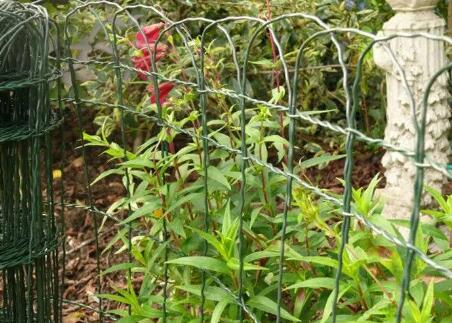Selecting the perfect garden flower border fence can significantly enhance the aesthetic appeal and functionality of your garden. With numerous options available, it can be challenging to choose the right one. Here are four pieces of advice to help you make the best decision for your garden flower border fence.
Consider the Material
The material of your garden flower border fence plays a crucial role in its durability, maintenance, and overall look.
Wood
Wooden fences are a popular choice for their natural and timeless appeal. They can be painted or stained to match your garden’s theme. However, wood requires regular maintenance to prevent rot, warping, and pest damage. If you prefer a classic and rustic look and are willing to invest time in upkeep, wood is an excellent option.
Metal
Metal fences, such as wrought iron or aluminum, offer durability and a sleek, elegant appearance. They are low maintenance and can withstand harsh weather conditions. Metal fences are ideal if you want a sturdy, long-lasting fence that adds a touch of sophistication to your garden.
Vinyl and Plastic
Vinyl and plastic fences are low-maintenance and versatile, available in various styles and colors. They are weather-resistant and can mimic the look of wood or metal without the associated upkeep. These materials are perfect for those who want an easy-to-maintain, cost-effective solution.
Bamboo
Bamboo fences provide an eco-friendly option with a unique, natural look. They are lightweight and easy to install but may not be as durable as other materials. Bamboo is suitable for gardeners seeking an environmentally conscious choice that adds a touch of exotic charm.
Assess the Style and Design
The style and design of your garden flower border fence should complement your garden’s overall aesthetic and serve its intended purpose.
Picket Fences
Picket fences are a classic choice, characterized by evenly spaced vertical boards. They are ideal for creating a traditional, charming look and are available in various heights and finishes. Picket fences work well in cottage-style gardens and can be painted to match your garden’s color scheme.
Decorative Panels
Decorative panels feature intricate patterns and designs, adding an artistic element to your garden. These panels can be made from metal, wood, or plastic and are perfect for creating focal points and enhancing visual interest. Decorative panels are great for gardeners who want to make a bold statement.
Trellis and Lattice
Trellis and lattice fences are excellent for supporting climbing plants and creating vertical garden spaces. They provide a delicate and airy look while offering functionality. These fences are ideal for gardeners who want to maximize planting space and add height to their garden borders.
Edging Fences
Edging fences are typically low-height barriers that define the boundaries of flower beds and garden paths. They provide a subtle way to organize your garden and keep plants contained. Edging fences are perfect for those who prefer a minimalist approach.
Determine the Size and Height
The size and height of your garden flower border fence should be appropriate for your garden layout and the specific needs of your plants.
Low Fences
Low fences, usually under 18 inches, are ideal for defining flower beds and garden paths without obstructing the view. They are suitable for small to medium-sized gardens and provide a neat and organized look.
Medium Fences
Medium-height fences, ranging from 18 to 36 inches, offer more substantial barriers while maintaining visibility. They are useful for keeping larger plants contained and protecting them from pets or small animals. Medium fences are versatile and can be used in various garden settings.
Tall Fences
Tall fences, over 36 inches, provide maximum protection and privacy. They are perfect for creating secluded garden areas, supporting climbing plants, and deterring larger animals. Tall fences are best suited for larger gardens where significant barriers are needed.
Evaluate Installation and Maintenance
Proper installation and maintenance are essential for the longevity and functionality of your garden flower border fence.
Easy Installation
Choose a fence with easy-to-install features, such as interlocking panels or pre-drilled holes. Ensure you have the necessary tools and follow the manufacturer’s instructions for a stable and secure installation. Preparing the ground by removing debris and leveling the soil will also help.
Maintenance Requirements
Consider the maintenance needs of the fence material you choose. Regular cleaning, inspections for damage, and applying protective coatings, such as paint or sealant, are essential to keep your fence in good condition. Low-maintenance materials like vinyl or plastic may be preferable for those with busy schedules.
Conclusion
Choosing the best garden flower border fence involves considering material options, style and design, size and height, and installation and maintenance requirements. By evaluating these factors, you can find a fence that enhances the beauty of your garden and meets your practical needs. For more information or to discuss your specific requirements, please contact us. As a trusted supplier of garden products, we are committed to helping you create the perfect garden space.
Post time: Jul-04-2024

